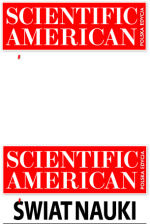 2006
2006
 2008
2008
 2010
2010
 2012
2012
 2014
2014



 |
Aphids – micro Jurassic Park
‘Morphology and taxonomy of Lower Cretaceous aphids from Baissa’
Agnieszka Homan – author of photographs and project manager ‘Fossilized ideal’ 7.02.2008r., WBiOŚ, Photograph taken with Nikon Eclipse E600 ‘Immortal aphid’ 8.01.2007 r., WBiOŚ, Photograph taken with Nikon Eclipse E600, photo editing with Photoshop – drawing a sketch of a body of an aphid |

|
Description popularizing the research project
Our planet is inhabited by no fewer than several million animal species, so far only 2 million have been described. Tiny mammals coexist with huge insects. Air is the element filled with insects, birds, mammals, even spiders and fishes and reptiles as well. It is quite probable that they do occasionally meet. Underground teems with mammals, larvae, birds, amphibians and ringed worms. It is easy to imagine that representatives of most types of animals do meet in one cubic metre of biosphere they share.
It is much harder to realize similar abundance of life in epochs different from the present Quaternary. Most of contemporary Earthlings link our evolutionary past with dinosaurs popularized by Steven Spielberg’s ‘Jurassic Park’. Many more Jurassic reptiles appear in both scientific literature and popular science literature. For most of us, they exhaust the list of animals inhabiting Earth in the Mesozoic Era. Yet, similarly like today, fauna was not limited to one or a few groups of the animal kingdom and dinosaurs were accompanied by, among others, invertebrates. Traces of insects can be found in Jurassic and Cretaceous fossils among the well-known ammonites and belemnites. The insects are tiny. As even now, aphids are easily unnoticed. The aphids found in Jurassic and Cretaceous sediments are very similar to the ones occurring today. Mere 150 million years of history of the animated world have not given aphids enough reasons to modify their bodies. Analyses of the fossilized sediments allow describing their morphology and even assigning to given species and higher systematic groups.
Maybe the fossil insects are not as awe-inspiring as their contemporary reptiles. If Steven Spielberg decided to make micro scale ‘Jurassic Park’, he would have a long list of species for potential cast. Their revival could wreak havoc in his film world, becoming main characters’ parasites and competitors for food.
Abstract
Baissa is one of the best known places where imprints of insects come from. The outcrop is located in the Asian part of Russia, in the West Transbaikalia, on the bank of the Vitim River. The main aims of the research was to study the morphological and taxonomical differences among aphids from Baissa and determine the systematic position of the existing ones and newly described genera and species. Material for the study comprised 526 aphid specimens from the collection of The Institute of Palaeontology, Russian Academy of Science in Moscow. The imprints were photographed under the light and the scanning microscope. Subsequently, the photographs were the subject of the computer processing with the Adobe Photoshop program. Morphological comparative analysis of Lower Cretaceous aphids allowed to distinguish many new taxa which have new combination of features that have not been mentioned so far. The paper includes descriptions of 76 taxa of different rank, including: 1 new family, 19 new genera and 45 new species. The general body structure of Early Cretaceous aphids is the same as in the other Mesozoic and recent aphids. The body structure typical for aphids developed very early in the evolution of this insect group (during the Jurassic period, 150-140 million years ago) and it remains almost not altered to this day. Only some parts of the body underwent small modifications (epicranium, antennae, rhinaria, ovipositor). 140 million years of unchanged body structure
Patronat honorowy
Leszek Jodliński
Dyrektor Muzeum Śląskiego w Katowicach
Zygmunt Łukaszczyk
Wojewoda Śląski
Jan Malicki
Biblioteka Śląska
Piotr Uszok
Prezydent Katowic
Adam Matusiewicz
Marszałek Województwa Śląskiego















